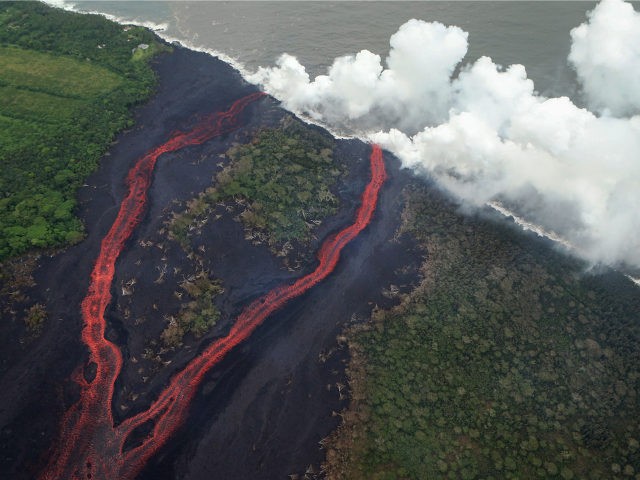Two weeks in, the volcanic eruption in parts of Hawaii has launched a cloud of poisonous gas and shards of glass into the atmosphere.
Kilauea’s fury continues unabated, and her meeting with the Pacific has been as volatile as the rest of her activities. Lava haze, or “laze,” is billowing into the air, carrying poisonous chemicals and tiny shards of volcanic glass. Explosive eruptions have blanketed the area in ash, while the sulfur dioxide emitting from the numerous fissures has roughly tripled. The laze itself is filled with hydrochloric acid — like airborne battery acid.
U.S. Geological Survey scientist Wendy Stovall has one very firm piece of advice for anyone in the area: “If you’re feeling stinging on your skin, go inside.” Meanwhile, the Coast Guard is enforcing a safety zone about 1,000 feet around the place where Kilauea’s fiery blood flows into the water.
Coast Guard Lt. Cmdr. John Bannon has advised the public that “getting too close to the lava can result in serious injury or death.” His point was proven all too clearly on May 19, when flying lava shattered a man’s leg below the knee.
“Here’s nature reminding us again who’s boss,” said local orchid grower Joseph Kekedi. While he lives only three miles away from where the lava entered the sea, he has been fortunate that the cloud has not blown in his direction.
Kilauea has displaced some 2,000 people and destroyed more than 40 structures since the beginning of the eruption. More than 40 fissures have torn the ground open, spewing lava toward the water at about 300 yards per hour. “We have no way of knowing whether this is really the beginning or toward the end of this eruption,” said University of Hawaii volcanologist Tom Shea. “We’re kind of all right now in this world of uncertainty.”

COMMENTS
Please let us know if you're having issues with commenting.